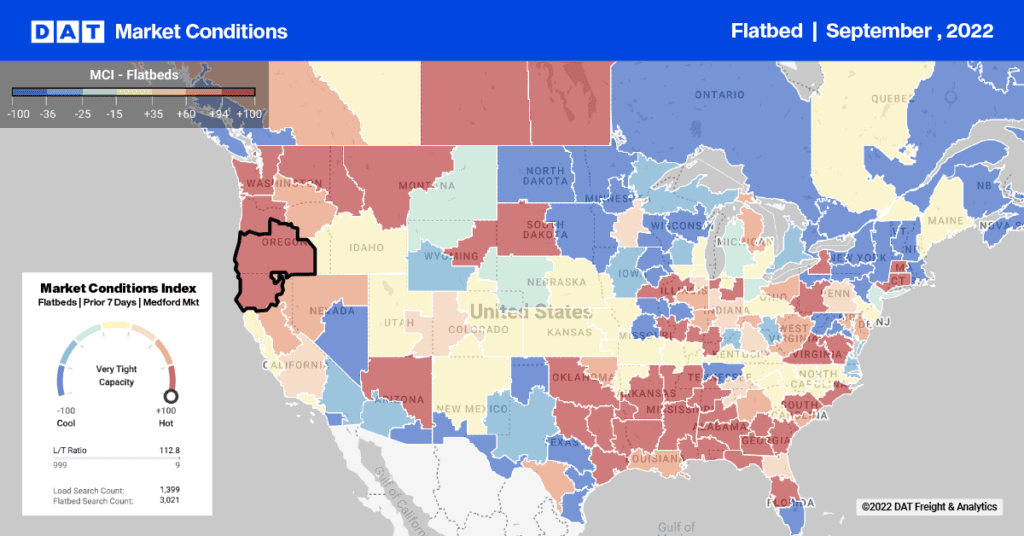When fuel prices are low, your costs go down. This is good. But all-in spot market rates have also gone down, partly due to lower fuel surcharges. For example, when the average fuel surcharge for vans was down 21¢ last month compared to July 2014, the national average spot market rate was down 22¢ year-over-year.
Let’s say you were hauling van loads between Chicago and Atlanta last month. The average headhaul rate on that lane in July was $1.84/mile, while the backhaul was $1.50/mile. That’s an average of $1.67/mile for the 1,432-mile trip, or $2,391 total. In July 2014, that lane paid an average of $1.97/mile roundtrip, or $2,821 total.
Cheaper diesel saves you money on that trip, but the lower fuel surcharge still makes for $430 less in your pocket. Couple the lower rates with lower freight availability – partly due to the slowdown in the oil and gas industry – and many smaller carriers find current conditions to be challenging.
Learn how you can save on fuel costs with the DAT Fuel Card. To find out more, contact us online or call 800-621-2404.
 Spot market rates come from DAT RateView™ and can be found in all DAT load board packages.
Spot market rates come from DAT RateView™ and can be found in all DAT load board packages.
 What you pay for in a
What you pay for in a
gallon of diesel, from eia.org.
July is usually a slow month, but diesel prices also hit the lowest they’ve been since 2009. The blue line in the chart above shows that all-in rates for July 2015 were down compared to July 2014. The line in red, which shows the average line haul rate minus fuel surcharges, is basically flat year over year.
Depending on how well a trucker manages fuel, current prices could be a boost because fuel is dropping or a burden because revenue is also falling. This really drives home the need to understand fuel as an operating cost and to scale rates and the fuel surcharges as accurately as possible. DAT uses 5.5 mpg for fuel calculations, which is good average for fleets using the load boards.
More Trucks on the Road
Cheaper fuel also affects truck capacity and demand. While it’s typical for spot market rates to increase when load posts are up – and load availability was trending up in the first half of August – truck posts have also been on the rise. With the cost of diesel low, there are more trucks on the road, which leads to looser truckload capacity and less pressure on rates. But if seasonal patterns repeat this year, rates should begin to turn around soon.


